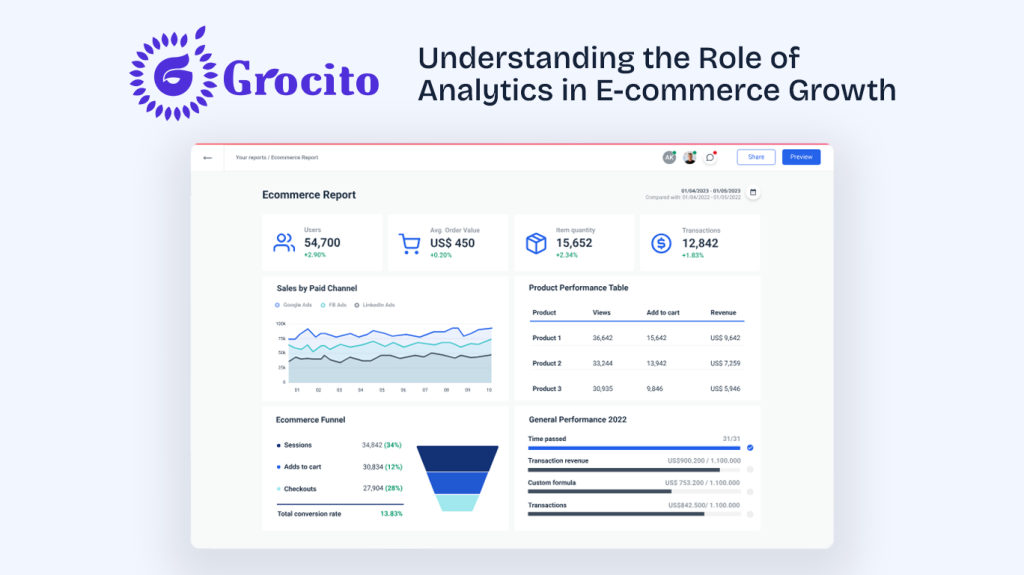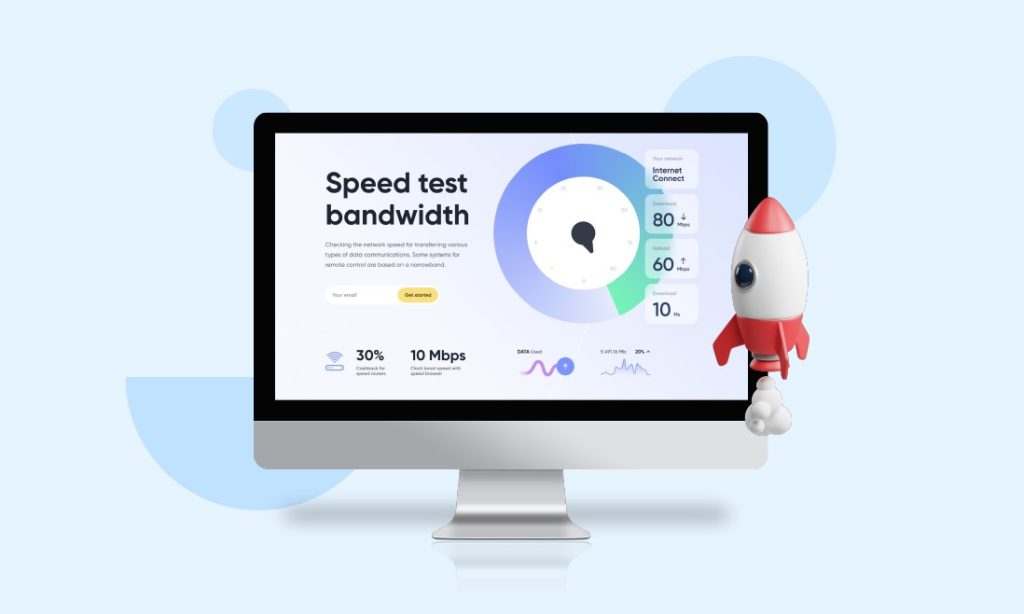In the dynamic world of e-commerce, data is a powerful tool that can drive business decisions and fuel growth. Analytics provide valuable insights into customer behavior, sales trends, and overall business performance. By leveraging these insights, e-commerce businesses can make informed decisions, optimize their operations, and enhance the customer experience. In this blog, we’ll explore the role of analytics in e-commerce growth and how Grocito’s tools can help you harness the power of data. Let’s see Understanding the Role of Analytics in E-commerce Growth.

The Importance of Analytics in E-commerce
1. Understanding Customer Behavior
Analytics allow businesses to gain a deep understanding of their customers. By tracking metrics such as page views, time spent on site, and purchase history, you can identify patterns and preferences. This information helps you tailor your marketing strategies, product offerings, and website design to better meet customer needs.
Key Metrics to Track:
- Customer Demographics: Age, gender, location, and other demographic information.

- Behavioral Data: Browsing history, product views, and purchase patterns.
- Engagement Metrics: Time spent on site, bounce rate, and click-through rates.
2. Optimizing Marketing Strategies
Data-driven marketing is more effective and efficient. Analytics provide insights into which marketing channels and campaigns are driving the most traffic and conversions. By analyzing this data, you can allocate your marketing budget more effectively and focus on strategies that yield the highest return on investment (ROI).
Key Metrics to Track:
- Traffic Sources: Organic search, paid ads, social media, and email campaigns.

- Conversion Rates: Percentage of visitors who complete a desired action, such as making a purchase.
- Cost Per Acquisition (CPA): The cost of acquiring a new customer through various marketing channels.
3. Enhancing the Customer Experience
A positive customer experience is crucial for retaining customers and driving repeat business. Analytics help you identify pain points in the customer journey, such as high cart abandonment rates or slow page load times. By addressing these issues, you can create a smoother and more enjoyable shopping experience.
Key Metrics to Track:
- Cart Abandonment Rate: Percentage of customers who add items to their cart but do not complete the purchase.
- Page Load Time: The time it takes for your website pages to load.

- Customer Satisfaction Scores: Feedback collected through surveys and reviews.
4. Improving Inventory Management
Effective inventory management is essential for meeting customer demand and minimizing costs. Analytics provide insights into which products are selling well and which are not. This information helps you make informed decisions about stock levels, reordering, and discontinuing products.
Key Metrics to Track:
- Sales Data: Number of units sold, revenue generated, and profit margins.
- Inventory Turnover Rate: How quickly inventory is sold and replaced.
- Stock Levels: Current inventory levels and reorder points.
5. Driving Business Growth
Ultimately, analytics are a key driver of business growth. By leveraging data, you can identify new opportunities, optimize your operations, and make strategic decisions that propel your business forward. Whether it’s expanding into new markets, launching new products, or improving your website, data-driven insights provide the foundation for sustainable growth.
Key Metrics to Track:
- Revenue Growth: Increase in sales and revenue over time.
- Customer Lifetime Value (CLV): The total value a customer brings to your business over their lifetime.
- Market Trends: Emerging trends and opportunities in your industry.

Grocito offers a suite of analytics tools designed to help e-commerce businesses harness the power of data. Here’s how Grocito can support your analytics needs:

Conclusion
In the competitive world of e-commerce, data is a powerful asset that can drive growth and success. By leveraging analytics, businesses can gain valuable insights into customer behavior, optimize their operations, and make informed decisions. Grocito’s comprehensive analytics tools provide the foundation for data-driven success, helping you harness the power of data to propel your business forward. Embrace the future of e-commerce with Grocito and unlock the full potential of your data.




